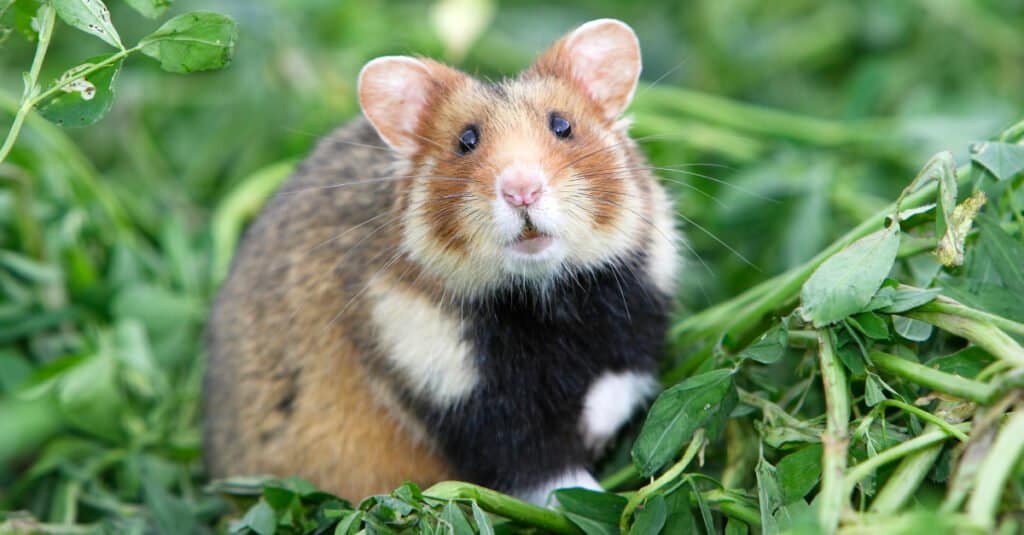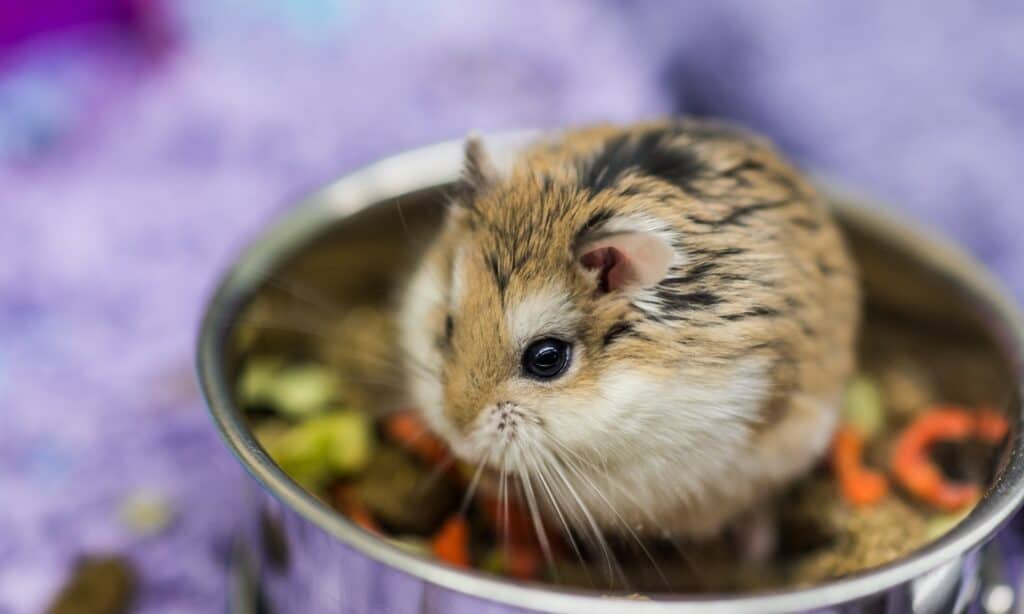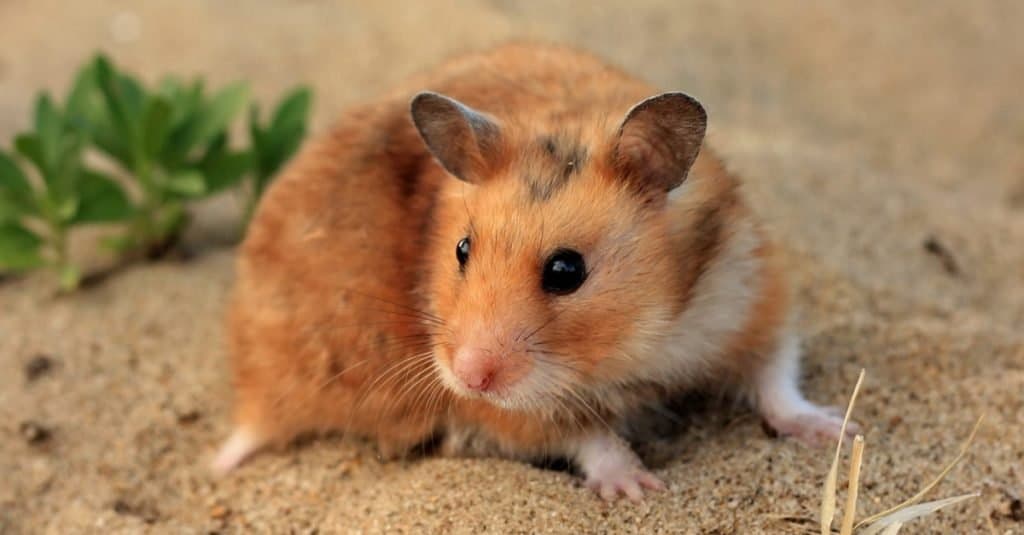Hamsters are rodents. It’s been said that species with hamster-like features, now extinct, can be traced back millions of years. Keep reading to find out what is the oldest hamster to ever live?
Oldest Extinct Hamsters to Ever Live
Hamsters first evolved into existence around 15 million years ago. Their distinguishing features from other rodents include their teeth and jaws. Body and skull sizes vary depending on the lifestyle of these ancient species.
These facts are hard to verify because the fossilized remains are so fragmented not much can be said for certain.
These are some of the oldest hamsters to have ever lived:
- Allocricetulus bursae: 140,000 Years Ago
- Neocricetodon grangeri: 4 to 6 Million Years Ago
- Cricetus polgardiensis: 5 to 10 Million Years Ago
- Cricetus kormosi: 5 to 10 Million Years Ago
Neocricetodon grangeri: 4 to 6 Million Years Ago
This hamster is one of many that have been found spanning different ages in the Yushe Basin in North China. This fossil proves that there have been many hamster species in the region for a long time.
It’s believed this hamster loved to climb and eat insects. While most people who own hamsters today don’t feed them insects, it’s important to ensure they get enough protein. More common protein sources like chicken and insects like mealworms are acceptable.
Oldest Hamster to Ever Live: 4.5 Years Old

Karen Smeaton of Tyne and Wear owned the oldest hamster to ever live in the United Kingdom. There is no other information about this hamster, including its breed or living conditions.
Conflicting information exists about the age of hamsters. Reputable sources record some wild species as living up to 8 years of age. However, the Guinness Book of World Records states that Smeaton’s hamster of 4.5 years was the oldest.
Smeaton’s hamster is likely the oldest recorded pet hamster. Unreported laboratory and wild hamsters may live for more than 5 years.
How Long Do Hamsters Live?

©iStock.com/krblokhin
Most hamsters live between two and three years, but some live longer. Bigger hamsters tend to live longer than smaller ones. The Roborovski hamster is reputed to be the longest-living hamster, while the Chinese Dwarf has the shortest lifespan.
Hamsters have short lifespans because their bodies undergo a lot of metabolic stress. That means that they have a raised metabolism to keep their bodies warm.
Because hamsters are so small, much more work goes into keeping their bodies warm. This breaks down their cells faster and ages them quickly.
The European hamster that lives up to 8 years is twice the size of the Syrian hamster. The European hamster is wild, while the Syrian hamster is mostly bred in captivity. There are limited populations of Syrian hamsters in the wild.
Hamsters are also not meant to live a long time. Evolution favored their ability to reproduce over their longevity. That’s why hamsters have small brains and can have many babies during their lifetime. The idea is that they’ll leave many children behind to make up for the fact that they don’t have a long lifespan.
Here is a list of various captive hamsters and how long they live:
- Russian Dwarf Hamster: 2 Years
- Syrian Hamster: 2 to 3 Years
- Chinese Dwarf Hamster: 2 to 3 Years
- Roborovski Hamster: 3 to 4 Years
- Campbell’s Dwarf Hamster: 1.5 to 3 Years
- Eversmann’s Hamster: 2 to 3 Years
- Gansu Hamster: 3 Years
Here is a list of various wild hamsters and how long they live:
- European Hamster: 8 Years
- Mongolian Hamster: 3 Years
- Turkish Hamster: 2 Years
- Romanian Hamster: 2 to 3 Years
What Makes a Hamster Live Longer?

©Alexruss/Shutterstock.com
A low-stress environment that’s clean and large is a big factor in extending a hamster’s lifespan. Having a balanced diet and regular exercise keeps them healthier for longer. More than one form of exercise is a good rule of thumb.
Hamsters are food hoarders and need a proper substrate for digging around. They store food in their cheeks, hiding in or near a burrow they’ve created underground. They store so much food in their cheeks at one time that their head may double in size.
Some foods need to be avoided to keep a hamster healthy. These foods include garlic, onion, raw beans, celery, parsley, and radishes. Anything salted or seasoned should not be fed to your pet.
Do not keep hamsters together as it causes too much stress, leading to aggression. Hamsters are solitary and will fight other hamsters. Sometimes the wounds inflicted during struggles are fatal.
If you’re mating your hamsters, which isn’t recommended unless you’re trained, the male must be separated from the female as soon as mating has occurred. This will keep the female from attacking the male and possibly killing him.
Mother hamsters may eat their babies, especially if they become stressed out. Any hamster about to give birth should be left alone and given plenty of space.
About two weeks after birth, it’s ok to approach the cage and remove the babies. Any babies remaining after three weeks are also at risk of being cannibalized. Hamsters are considered fully mature at 3 weeks old.
Old Age in Hamsters: What It Looks Like
Hamsters are old when they’ve aged a year and a half. By this point, hamsters will have clearly defined changes in behavior. They may startle easily, and long-lived hamsters may lose some of their hair.
In addition, you may notice their exercise routines and playtime changing. The hamster will not run around the cage as much as it used to and may quit using its exercise wheel or floorball.
It will not be as reactive to stimulation and will prefer to cuddle up in warm places. As its final day approaches, a pet hamster stops eating and drinking.
Up Next
The post The Oldest Hamsters to Ever Live appeared first on AZ Animals.
from Animal News, Facts, Rankings, and More! - AZ Animals https://ift.tt/kJLWxYR